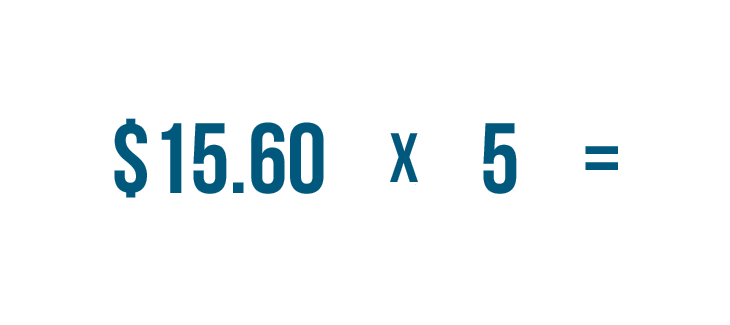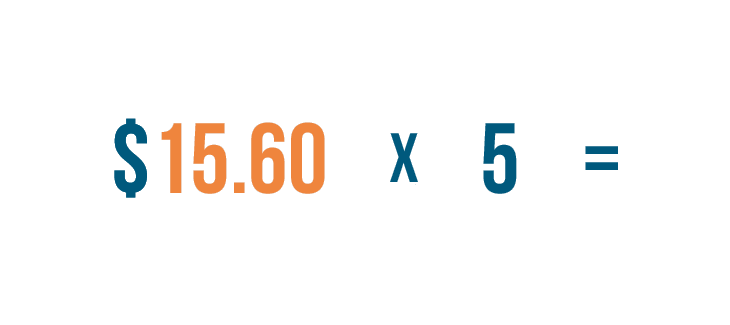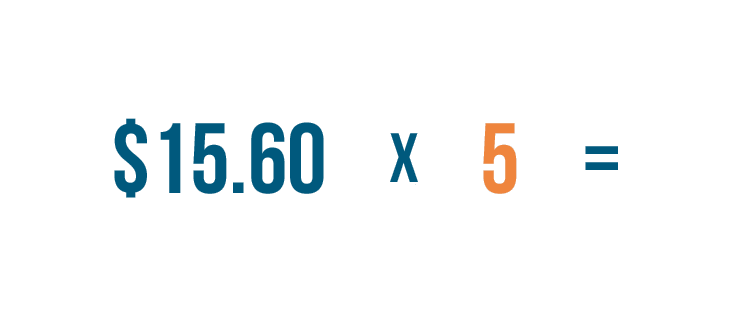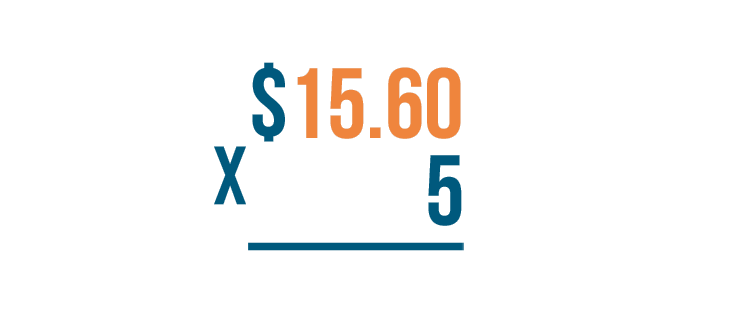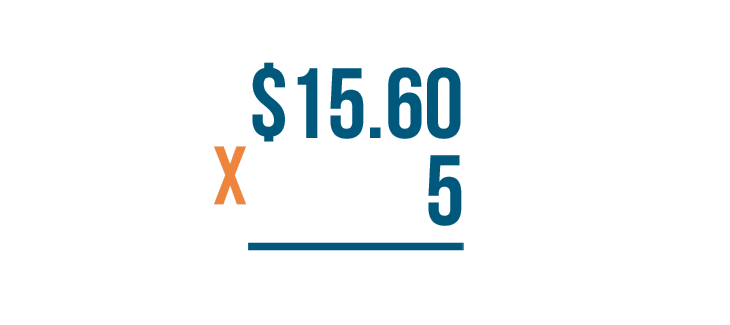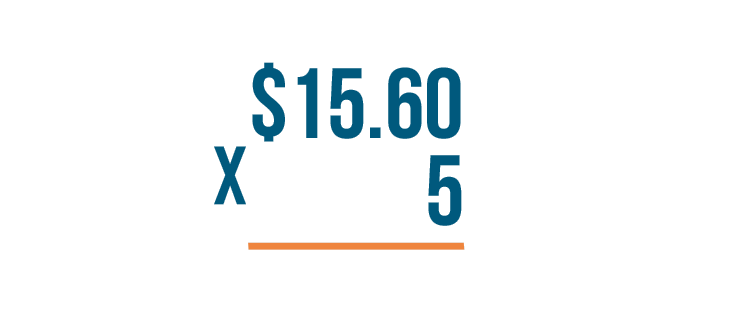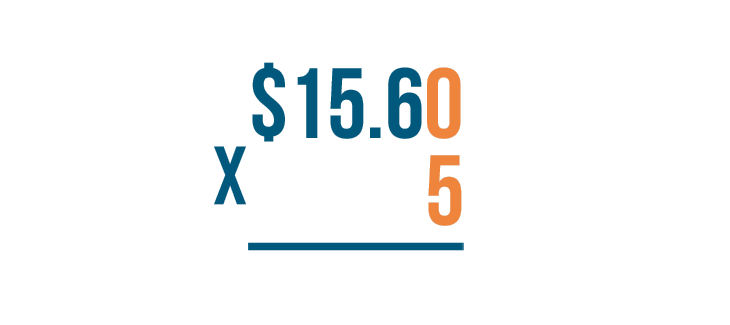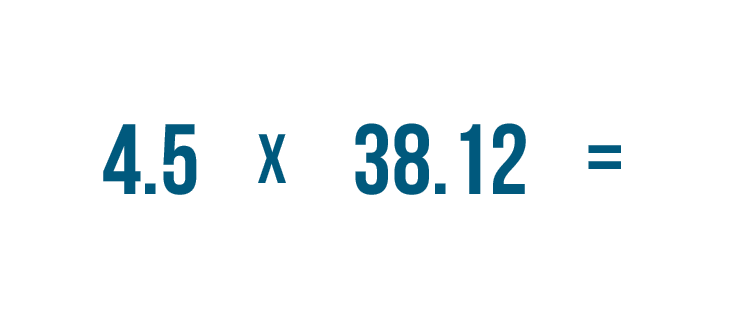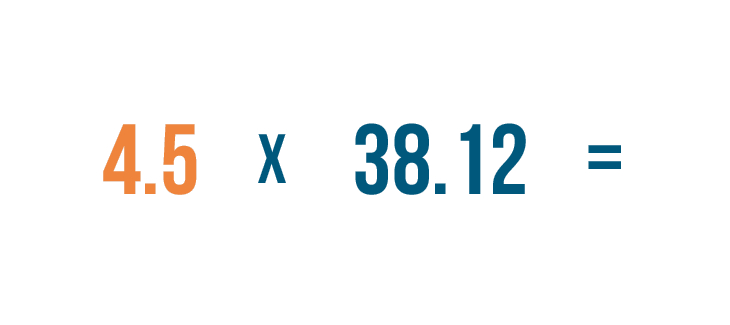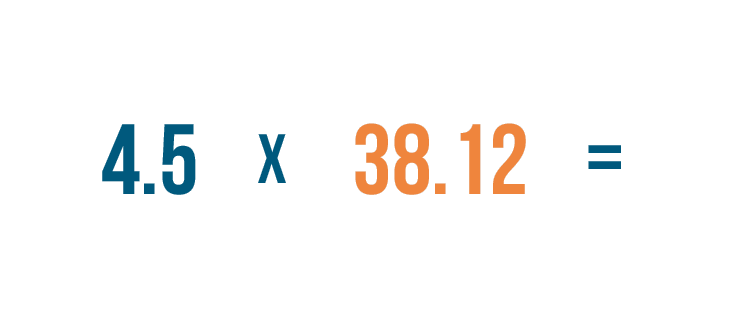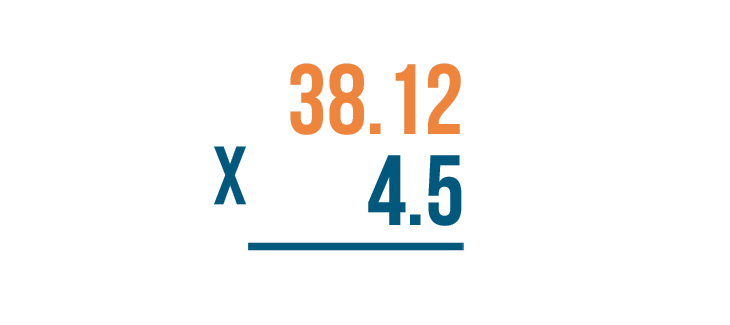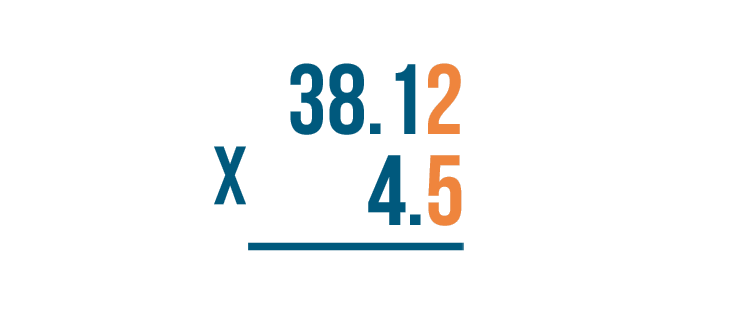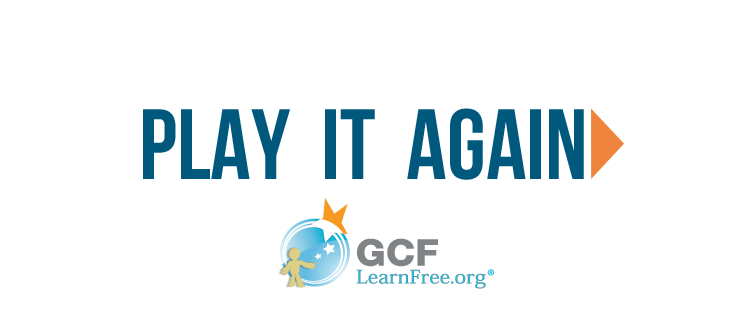Decimals
Multiplying and Dividing Decimals
Multiplying with decimals
In Lesson 6, you learned how to add decimal numbers. You may be able to think of times when you'd add decimals in real life. For example, let's say you go to the store and find a shirt you really like. The price tag says it costs $15.60. You like the shirt so much that you decide to buy five of them.
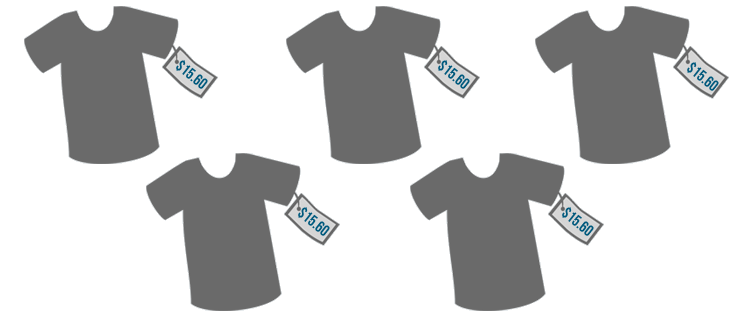
To figure out the total cost, you could add the prices.
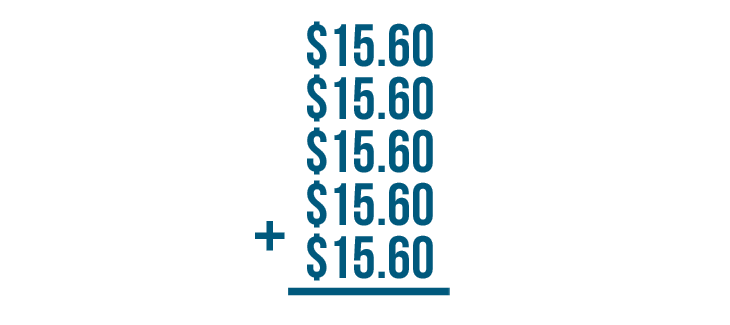
Adding this many numbers could take a long time. In the lesson on multiplication, we learned that when you multiply, you are increasing a number many times. Because all of the shirt prices are the same, multiplication could help you solve this problem a little faster.
When you multiply decimal numbers, it's helpful to set up the problem in a way that makes it easier for you to solve it one step at a time.
Click through the slideshow below to learn how to set up a multiplication problem with decimals.
Now you try it. Set up these multiplication expressions. Don't solve them yet—just set them up.
At a bookstore, you buy three novels. Each novel costs $7.99.
The cost of your child's school lunch is $3.75 per day. You give your child enough money to buy lunch for 5 days.
You fill your car's tank with 8 gallons of gas. Each gallon costs $3.68.



